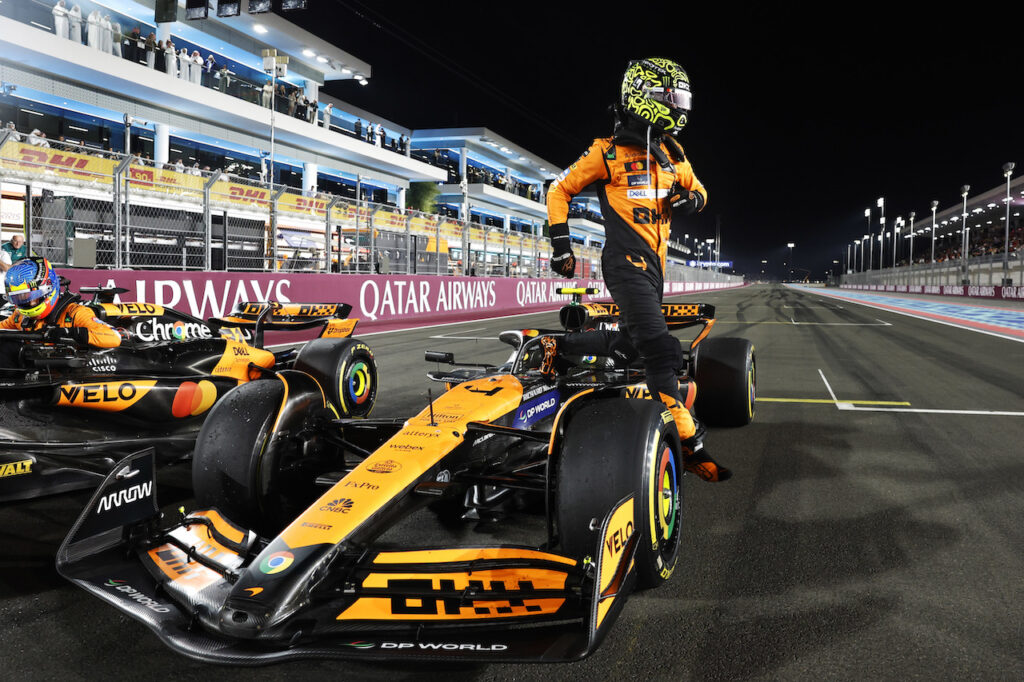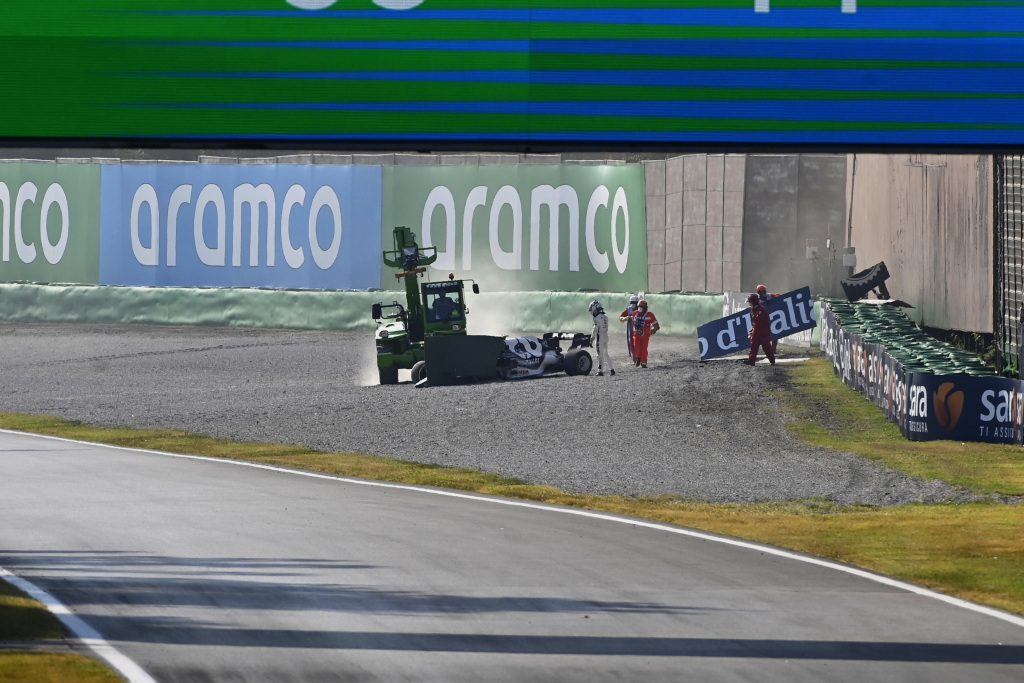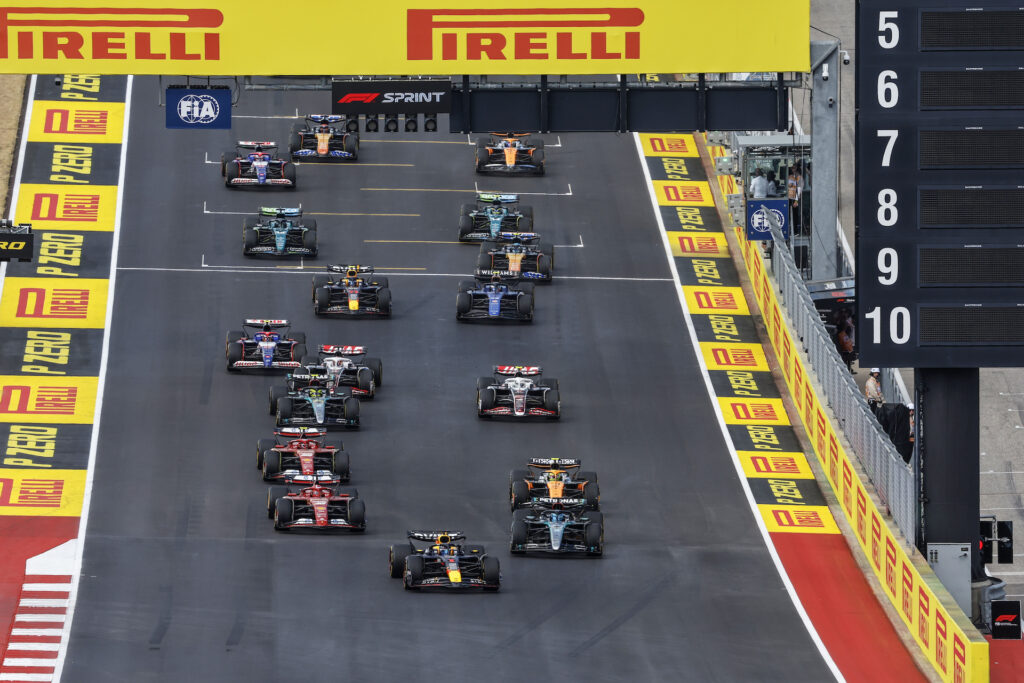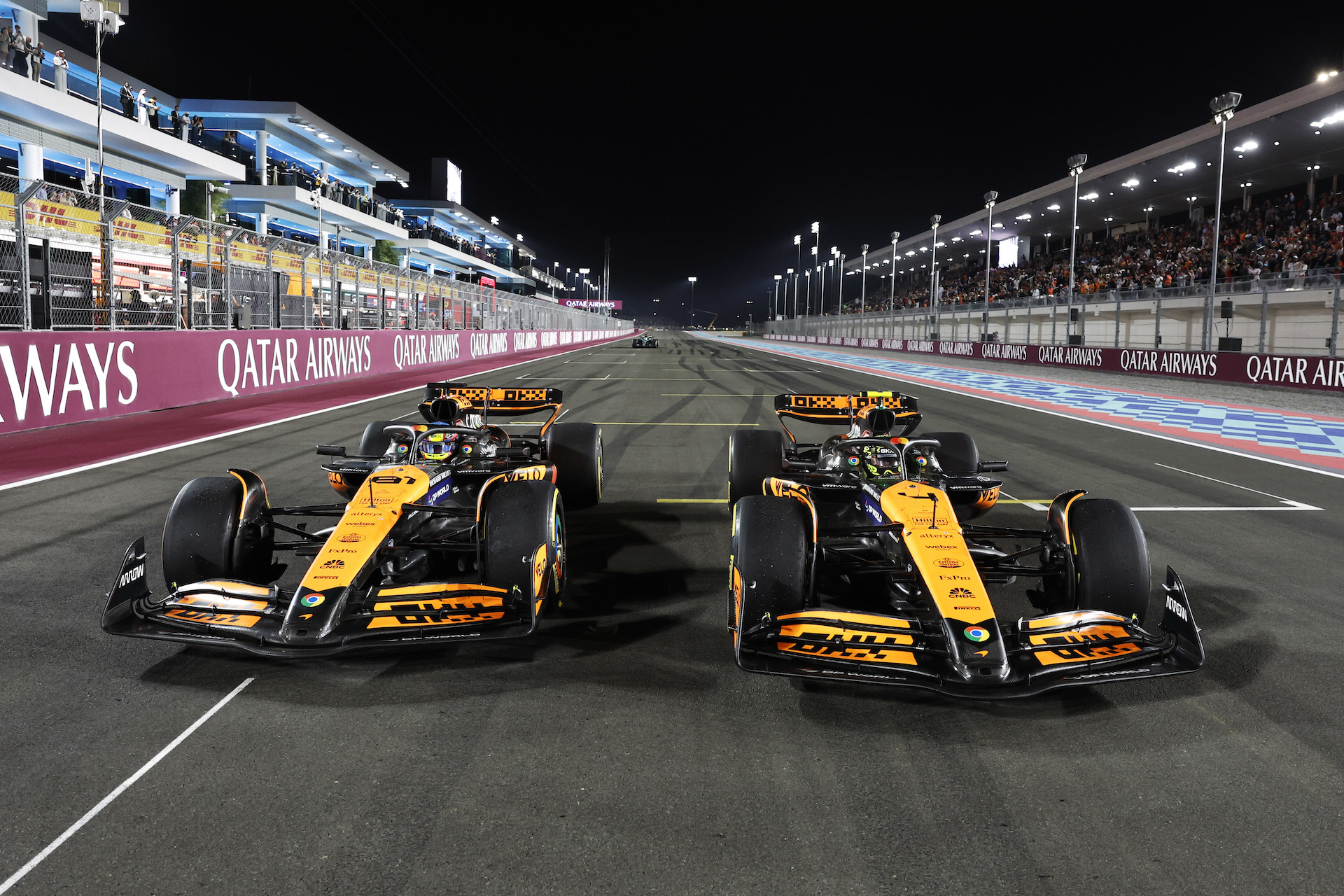F1 Sprint Races are back for the 2025 season. These bonus races and precious opportunities for extra points will add to the on-track action at six of the 24 Grand Prix this season.
As in 2024, a F1 Sprint weekend will see the sole practice session and Sprint qualifying take place on the Friday. The Sprint Race will then be the first track action on Saturday. Qualifying for the Grand Prix will then be held later on the Saturday.
Here’s a look at what to expect from the Sprint Races during Formula 1 weekends.
🎟️ Book Formula 1 tickets for the 2025 season now!
Where are the F1 Sprint Races in 2025?
In 2025, the number of Sprint Races will remain at six. These are the race weekends that will host Sprint races. The only change from 2024 is that Belgium will replace Austria.
| Race | Sprint Race date | Grand Prix date |
|---|---|---|
| Chinese Grand Prix 🇨🇳 | 22 March | 23 March |
| Miami Grand Prix 🇺🇸 | 3 May | 4 May |
| Belgium Grand Prix 🇧🇪 | 26 July | 27 July |
| USA Grand Prix 🇺🇸 | 18 October | 19 October |
| Brazilian Grand Prix 🇧🇷 | 8 November | 9 November |
| Qatar Grand Prix 🇶🇦 | 29 November | 30 November |
What is an F1 Sprint race and how does it work?
An F1 Sprint Race is a shorter race (around one third of a Grand Prix) with more intensity which takes place on the Saturday of a Grand Prix weekend. This offers fans attending the Grand Prix extra entertainment included in the price of their weekend ticket.
Each Sprint Race features its own Sprint Shootout qualifying session, a shorter format of regular qualifying, which is held on the Friday. Drivers can still win championship points in the Sprint Race, but unlike previous years it no longer sets the grid for Sunday’s Grand Prix, which is still done by the traditional qualifying session now held on the Saturday afternoon after the Sprint Race.
How long is the F1 Sprint Race?
Formula 1 Sprint Races are around 100km (62 miles). Sprints tend to last around 30 minutes but cannot last longer than 60 minutes.
The length of each Sprint Race varies according to the track. For example, the Sprint Race at Baku in 2023 lasted 17 laps and was won by Sergio Perez with a time of 33:17.667. Whereas at the Belgian Grand Prix, Max Verstappen won after 24:58.433 and 11 laps.
How does F1 Sprint qualifying work?
Sprint qualifying, now known as the Sprint Shootout, is essentially a short-form qualifying session that sets the grid for the Sprint Race.
The format changed in 2023, where the new Sprint Shootout takes place on Friday afternoon with the Sprint itself on Saturday afternoon.
The format of Sprint Shootout is the same as qualifying, but with the three segments named SQ1, SQ2 and SQ3, as opposed to Q1, Q2 and Q3. They are shorter at 12, 10 and 8 minutes, instead of 18, 15 and 12 minutes.

Do drivers earn points for winning the Sprint Race?
Those finishing the Sprint event between first and eighth position will score points towards their championship tally. This is more points than they were in 2021, when points were only awarded for the top three places, so we can expect more competitive races.
| Position | Points |
|---|---|
| 1st | 8 |
| 2nd | 7 |
| 3rd | 6 |
| 4th | 5 |
| 5th | 4 |
| 6th | 3 |
| 7th | 2 |
| 8th | 1 |
Why did F1 decide to run Sprint Races?
Sprint Races have been utilised in the junior series since 2005 and the inaugural season of GP2 (later rebranded as Formula 2). The current system sees drivers qualify on a Friday, which sets the grid for the feature race on Sunday.
However, the top 10 results from qualifying are reversed to form the grid for a Sprint Race on Saturday. The idea being the fastest drivers are challenged to work their way through the field.
The idea to use this concept in Formula 1 was first touted in 2019. As F1 approached its new technical regulations, Ross Brawn said he believed the cars offered a “stable platform” to “try a few new things”.
There was opposition to the reverse grid element of the idea, which was described by many as “gimmicky”. So it was removed, but the idea of a shorter race was picked up. It gave fans more racing action throughout the weekend both at and away from the track.
What happens if a driver crashes during a Sprint Race?
There are two big implications if a driver crashes during the Sprint Race session, and they are sporting and financial.
Any race ending crash will end that driver’s chances of taking any points home from the Sprint. Penalties are only applied to the Grand Prix, so they might pick up a few places if another driver is heavily penalised.

But crashing an F1 car isn’t cheap. Mick Schumacher’s crash during the Saudi Arabian Grand Prix was estimated to have incurred $1 million in repair bills.
Because of the increased danger of damage when the cars are racing in anger, each team was permitted to spend an extra $150,000 for every Sprint Race organised. If a driver doesn’t finish the race, they are permitted to spend an extra $100,000.
Given that a front wing is estimated to cost in excess of $100,000, the additional cash might not cover the damage suffered.
What’s happened in F1 Sprint Races so far?
F1 Sprint debuted at Silverstone in July 2021. Lewis Hamilton and Max Verstappen battled hard on the first lap, but the real winner of the opening tour was Fernando Alonso.
The Spaniard was the only driver to run the soft tyres, and made up six places on lap 1. He lost two of those positions, but it showcased the format’s ability to mix up the order through strategy.
The second F1 Sprint happened in Monza. Despite starting the Sprint on the front row, Hamilton found himself in fifth after the first lap, with McLaren’s Daniel Ricciardo and Lando Norris making good gains.
Pierre Gasly suffered a crash on lap one, meaning he would start the Grand Prix plum last. Bottas won the Sprint, despite engine penalties meaning he would be demoted to the back of the grid.

In 2022, Imola, Austria and Sao Paulo featured Sprints. Verstappen who the first two, with George Russell claiming an historic victory in Brazil.
In the 2023 season, the Sprint Races were standalone with their own qualifying session called ‘Sprint Shootouts’, and the number of races has increased to six. Sergio Perez won the first Sprint in Azerbaijan for Red Bull, while teammate Verstappen won in Austria, Belgium, Brazil and Austin, while McLaren’s Oscar Piastri won the Qatar Sprint.
Piastri went on to win his second Sprint at the end of the 2024 season, once again in Qatar. McLaren teammate Lando Norris won in Brazil, and the first four were dominated by the four-time world champion, Max Verstappen.
Be at an F1 Sprint in 2025
Sprint races have offered fans attending Formula 1 races an opportunity to witness even more tantalising racing action packed into the weekend experience. It also provides another title for the drivers to fight for, as well as championship points.
Have you seen a Sprint race in the flesh? Book your F1 tickets to these races in the 2025 season now!
